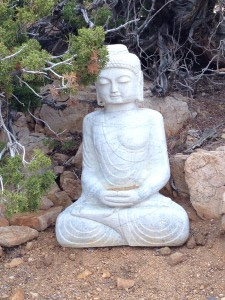Mindful this, mindful that. Are you starting to roll your eyes every time you hear the word? Or does it help brighten your awareness as you go through your day? For me, it’s both.
I do appreciate the reminder to bring patience, curiosity and care into my day. I know how important this is and I know, without a doubt that mindfulness practice changes lives for the better. And, from my perspective as a mindfulness teacher, I wonder if such widespread use of the phrase has caused it to be misunderstood, undervalued, or simply become the latest fashionable expression to enter our language. But what does it actually mean?
Mindfulness is about becoming fully aware of whatever is happening right now, whether we like it or not, whether pleasant or painful and learning to find some ease even within difficulty. We willingly cultivate more and more curiosity to gain a more refined understanding of ourselves and the world around us. As our awareness develops, our tolerance and resilience expand, and little-by-little the mind’s habitual patterns of unhealthy judgments and internal criticism diminish. In its broadest terms, mindfulness increases our capacity to skillfully manage our lives just as they are right now.
The practice of mindfulness starts with meditation, is supported by meditation, and requires meditation. One friend recently asked me how to even begin. It can feel daunting, but you can try it right now. Just sit down and breathe. Start here.
Let your eyes gently close…Feel your body touching the chair... Notice the sense of pressure as gravity helps you relax into sitting... Just notice... Now feel your breathing... Simply notice the inhale and the exhale. Try this for a few minutes. That’s enough to start. Just sit down and breathe.
Over time, we begin to see that meditation practice not only shines the light on what’s happening in our minds, but it also lets us see what is not happening. And this is an important distinction. Whatever is present in the mind – delight, excitement, calm, sadness, anger, anxiety, loneliness, etc. – will also be absent from the mind. We start to know from our direct experience that thoughts, moods and emotions come and go. The awareness of their presence or absence is precisely what develops mindfulness and gives us the freedom to respond to our experiences with care and wisdom.
Here’s an excerpt from the current issue of Tricycle, the Buddhist Review. To you who are out of your mind trying so hard to attain peace of mind…You lack peace of mind because you’re running after an idea of total peace of mind. That’s backwards. Be attentive to your mind in each moment, no matter how unpeaceful it might seem to be. Great peace of mind is realized only in the practice within this unpeaceful mind. When dissatisfaction is finally accepted as dissatisfaction, peace of mind reigns.
-Zen Master Kodo Sawaki Roshi (1880-1965)
And from my favorite poet, Wendell Berry…
Sit and be still
Until in the time
Of no rain you hear
Beneath the dry wind’s
Commotion in the trees
The sound of flowing
Water among the rocks,
A stream unheard before,
And you are where
Breathing is prayer.
Sign up to be notified about new classes & articles

